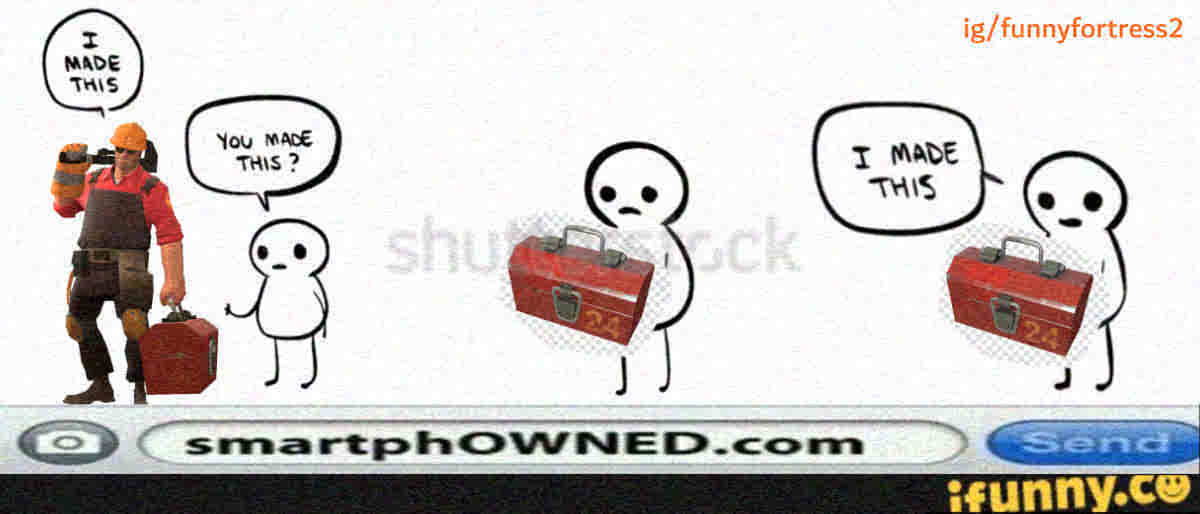Licensing & You

Hello everyone! Let's talk copyright - again.
To anyone that has used my How To Not Get Sued document this may not be news, but I have a certain interest in making sure people get credited for their work. I've written quite a bit about this topic and advised people on the use of assets and maps quite a few times now.
This is usually from the asset users' perspective, since the people most unsure about the whole topic are those who are just starting out with mapping and may not have quite gotten the hang of how things work. Also, there simply are vastly more asset consumers than creators out there. As I'm currently doing research about copyright for another mapping-adjacent project, I figured I might use the occasion for a blog post. This article will focus on the other side of the coin: Copyright from the asset creators' perspective.
What is a license?
Let's make something clear from the start: If you made something, it's yours. You don't need to sign, document, publish, pay, notarize, proclaim, prove or otherwise do anything for this to be the case. This provokes the question why you need a copyright license at all. Actually, what even is a license?
Quoting Wikipedia:
A public license or public copyright licenses is a license by which a copyright holder as licensor can grant additional copyright permissions to any and all persons in the general public as licensees. By applying a public license to a work, provided that the licensees obey the terms and conditions of the license, copyright holders give permission for others to copy or change their work in ways that would otherwise infringe copyright law.
In short: By default, the only person allowed to handle things you made is you. While sharing your work with other people on sites like TF2Maps obviously implies that you want other people to interact with it, a copyright license resolves ambiguities and defines specific terms. Most asset creators in the TF2Maps sphere I have interacted with usually have terms like this:
- You can download this asset from the place it is offered.
- You can pack the asset into a map and share it with others.
- If you pack this asset into your map and share it with others, you must credit the original creator.
This is done because the asset creator obviously wants people to know who made the cool stuff they find in a TF2 map. Early-development maps as seen during our map tests are usually not treated as strictly, but the download page for a finished or almost-finished map should clearly state all authors involved in making it - including asset creators.
Important: The Steam Workshop is a special circumstance in this regard. While many mappers treat it as a fast-dl/map sharing service, it is also the place in which maps are offered to Valve for inclusion in official TF2 updates. This process is not automated, unlike with cosmetic items. Instead, Valve sends an email to anyone listed as submission author on the Workshop page. Tragically, there have been several cases of mappers uploading maps to the Workshop without offering author status to all asset creators with the intent of removing their assets once the map is accepted by Valve. I suggest the term "scoop or dupe" for this tactic.
As an asset creator, you can protect yourself by demanding to be listed as an author on any Workshop map that includes your work. In fact, the Steam Workshop's terms and conditions already state this, but who reads them, right? (except me, I guess). See below on how to (optimistically) enforce this.
Why a license?
"Alright, Brokk", I can hear you say. "I've read this far but I'm getting bored. Can't I just copy the above bulletpoints into a readme.txt and be done with it?"
I mean, yeah; but you've put all this work into creating this cool, uh, crate prop or whatever, so why not spend a few minutes making sure you won't have to fight anyone over it?
For your convenience, I would like to suggest the following ready-made copyright license for you to use:
CC BY-NC-ND (Creative Commons Attribution-NonCommercial-NoDerivs)

This license enables reusers to copy and distribute the material in any medium or format in unadapted form only, for noncommercial purposes only, and only so long as attribution is given to the creator.
Bit of a mouthful, I know. Let me break that down for you:
- Creative Commons (CC) is a non-profit that aims to make creative works more accessible to the public and encourage creators share their work as openly and freely as possible. It is also the name of several copyright licenses. The "commons" in its name refers to the common body of work accessible to all of humanity. Using any Creative Commons license tends to imply that a creator is interested in their work being used widely and freely without any specific input by themselves.
- Attribution (BY): Means that the author of the work needs to be credited. It also means the license itself needs to be mentioned when crediting, and that any changes to the work (if permitted) need to be indicated. This prevents a game of telephone in which a work becomes unrecognizable and evades credit that way. To be honest, I still haven't figured out what "BY" stands for.
- Non-Commercial (NC): The work cannot be used commercially. The exact wording is "forbids use that is primarily intended for or directed toward commercial advantage or monetary compensation." This is relatively broad on purpose. There are no issues with, for example, taking Ko-Fi donations for publishing maps, but making money directly with the asset is not allowed. Licensing the map to Valve would of course not be permitted, meaning you will need to give your express permission for the asset to be included in a Workshop Submission (which, according to the Workshop terms and services, you have to do anyway).
- No Derivatives (ND): The work may be distributed, but only in its original form. It may not be changed, remixed, adapted, or transformed. This stops others from claiming authorship on parts of your work in any other way.
You can find the full license text, further explanations, and alternative license on the Creative Commons website.
You can license your asset by including this text document in the download and mentioning "This asset is licensed under Creative Commons BY-NC-ND 4.0" or similar on the download page.
By the way, if the above license does not completely fit the terms you have in mind, the Creative Commons people also have a nifty License Chooser that allows you to choose between all of their licenses.
The TF2Maps License?
By the way, we're also working on something more finely tuned to TF2Maps itself. More on that as it develops, but we want to make a customized version of one of the CC licensed available eventually that allows modellers and mappers to fine-tune how their creations are used. The Creative Commons license has a concept called "CCPlus" that can be used for this purpose. Some examples follow. Ideally creators will then be able to pick-and-choose the terms from this (uncomplete!) list on which terms they personally want:
Assets: - No Republishing, except when packed inside of a .bsp file. - No Commercial Use, except for Team Fortress 2's Steam Workshop. - No Commercial Use, except for Team Fortress 2's Steam Workshop and with express permission of the creator(s). - Attribution Required, except when published exclusively for the purposes of testing and iteration on TF2Maps.net. - Attribution Required, and a link to the Asset Pack needs to be supplied. - Attribution Required in the form of a README file inside of the packed .BSP file.
Textures: - No Derivations, except to the included .VMT files. - Derivations permitted, but attribution still needs to go to the original creator(s).
Maps: - No Republishing, except for Team Fortress 2 Community Servers ("FastDL"). - No Derivations, except to make the work compatible with another Source Engine Mod (for example, "Team Fortress 2 Classic"). - Attribution Required, except for the content owned by Valve and covered by the Steam Subscriber Agreement.
In the long run, we may offer a "standard" license containing a small amount of these terms - how does "The TF2Maps License" sound? Since the TF2M Team does not exactly have the budget for an on-call lawyer, we want to go slowly with this, however. Let us know what you think! As mentioned, we are still working on it.
Cheers!
-Brokk
Image by MCL15 I made this
Disclaimer: This is not legal advice. My law experience is limited. The following constitutes my observations in interaction with the TF2Maps community. I am trying to describe the community's vague consensus and the time-honed customs in handling assets, not some kind of court-approved TF2Maps user agreement. Consider the following my personal, friendly recommendation on how to handle these matters. If something seems unclear, talk to TF2 Maps Staff or the asset creator themselves (yes, this includes Valve, and yes, they do answer their emails, it may just take a while).

